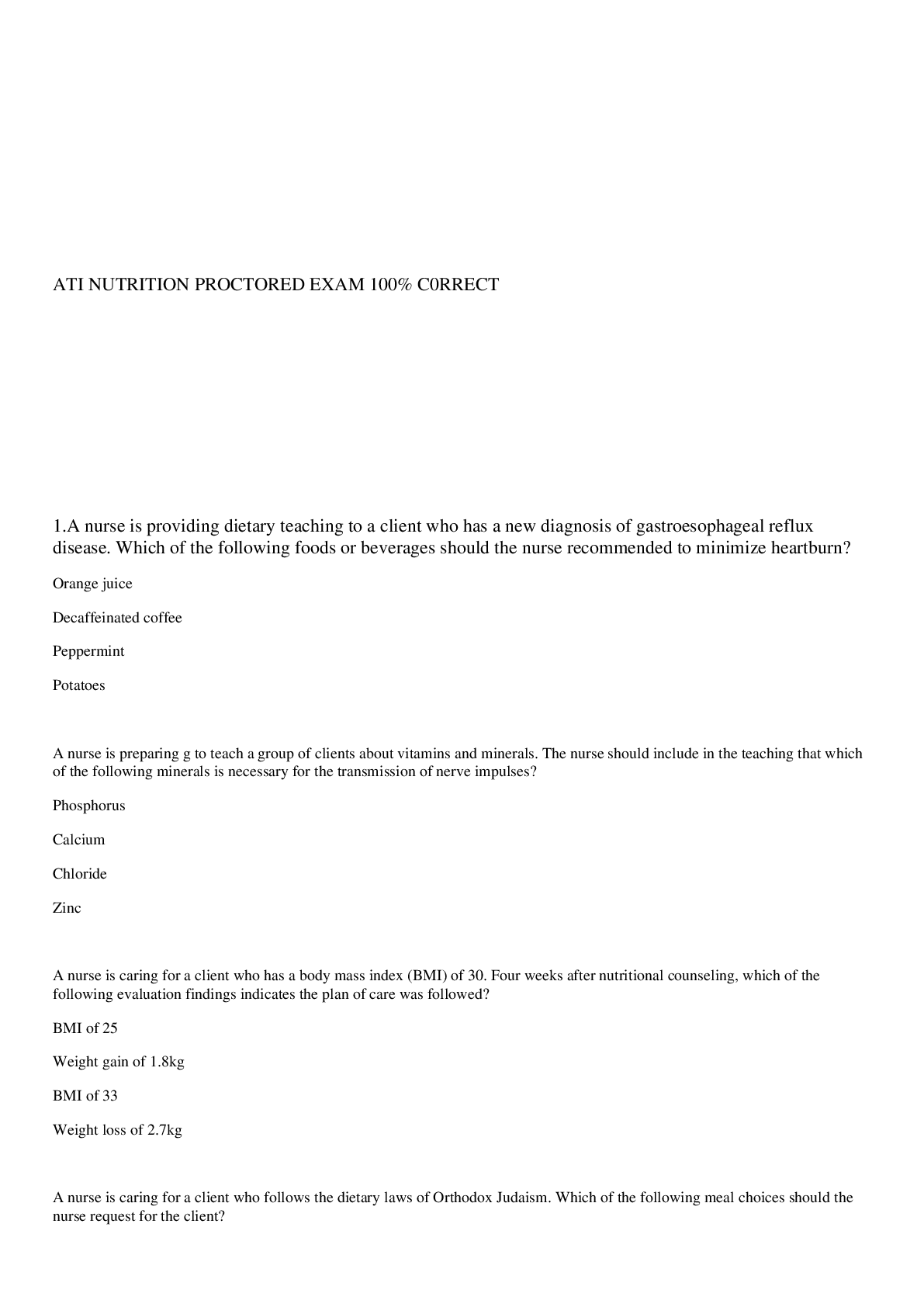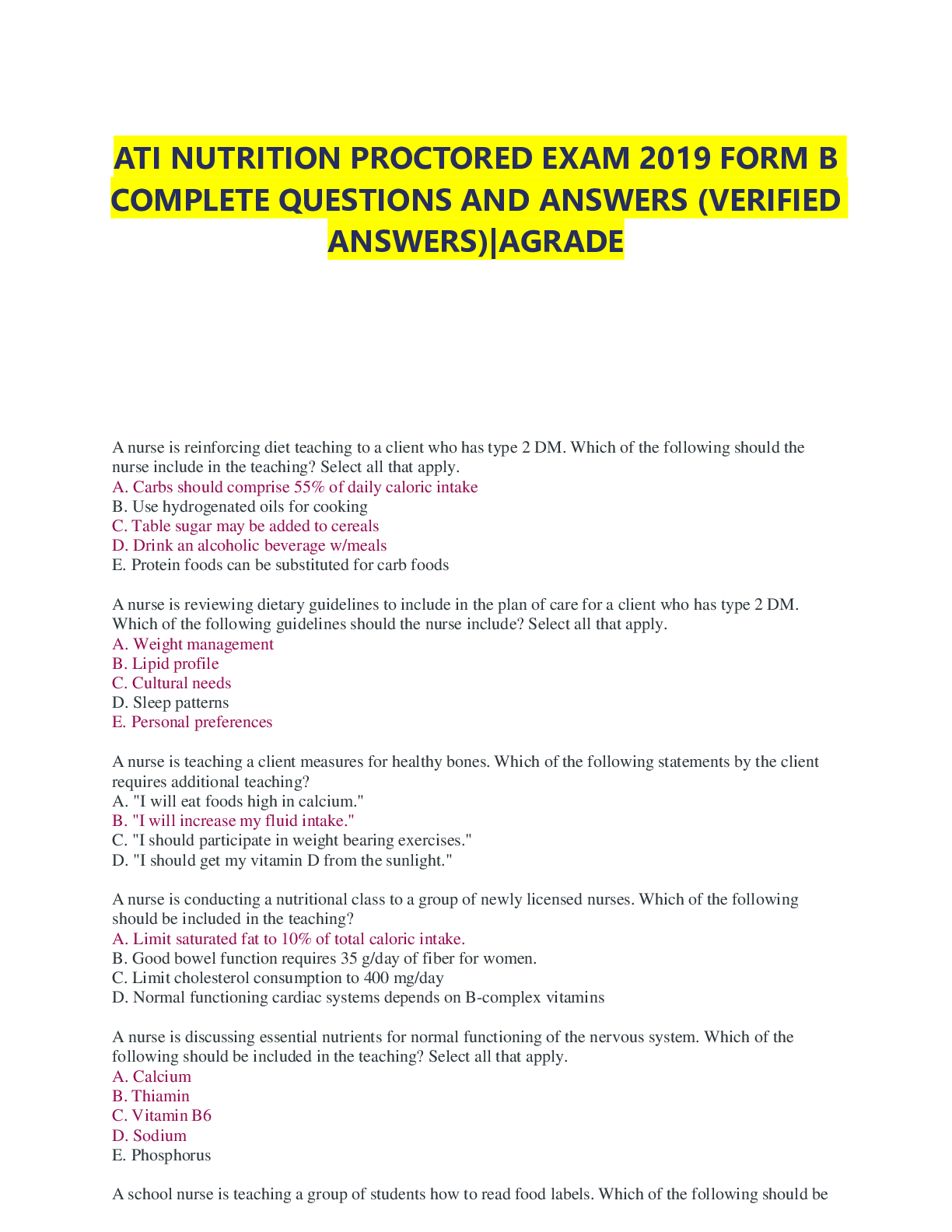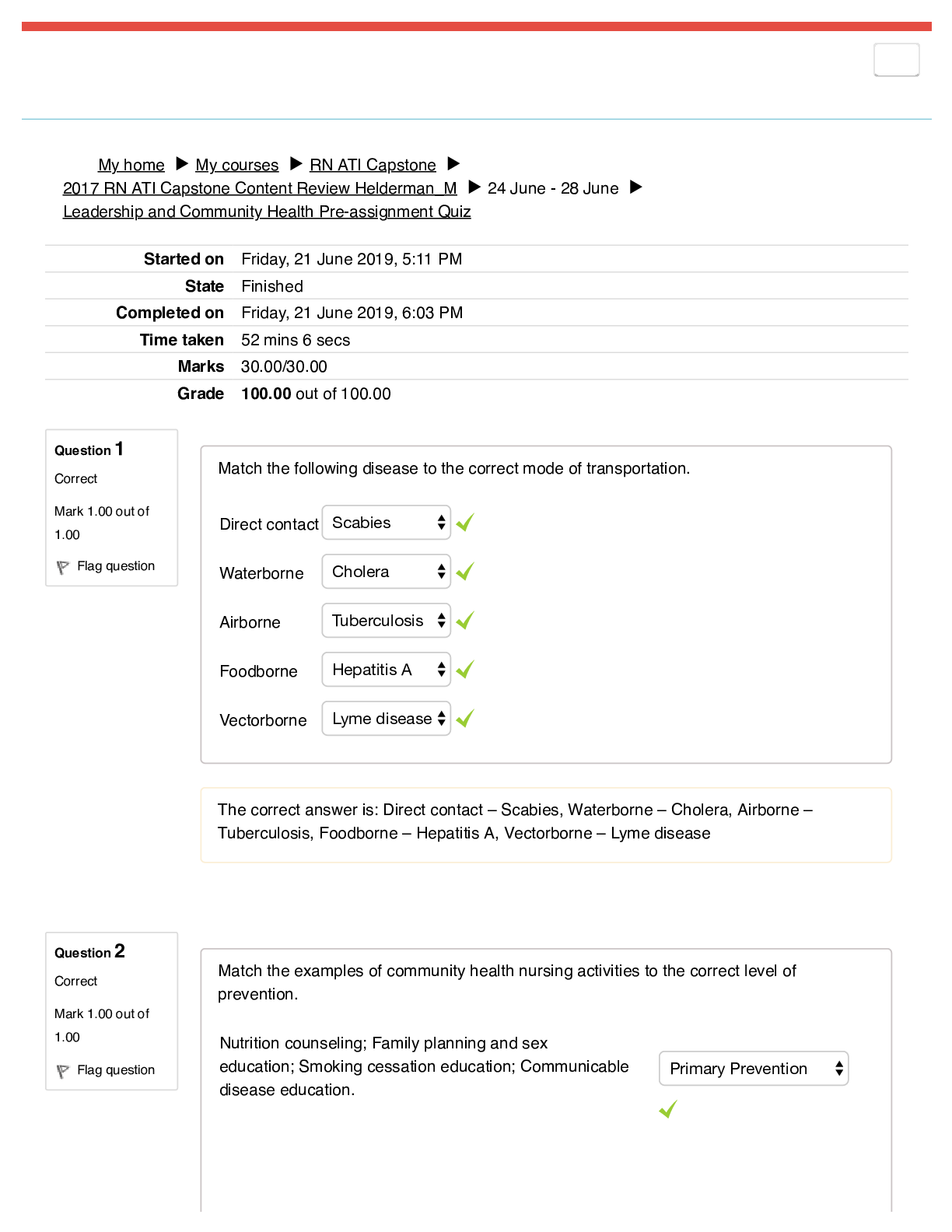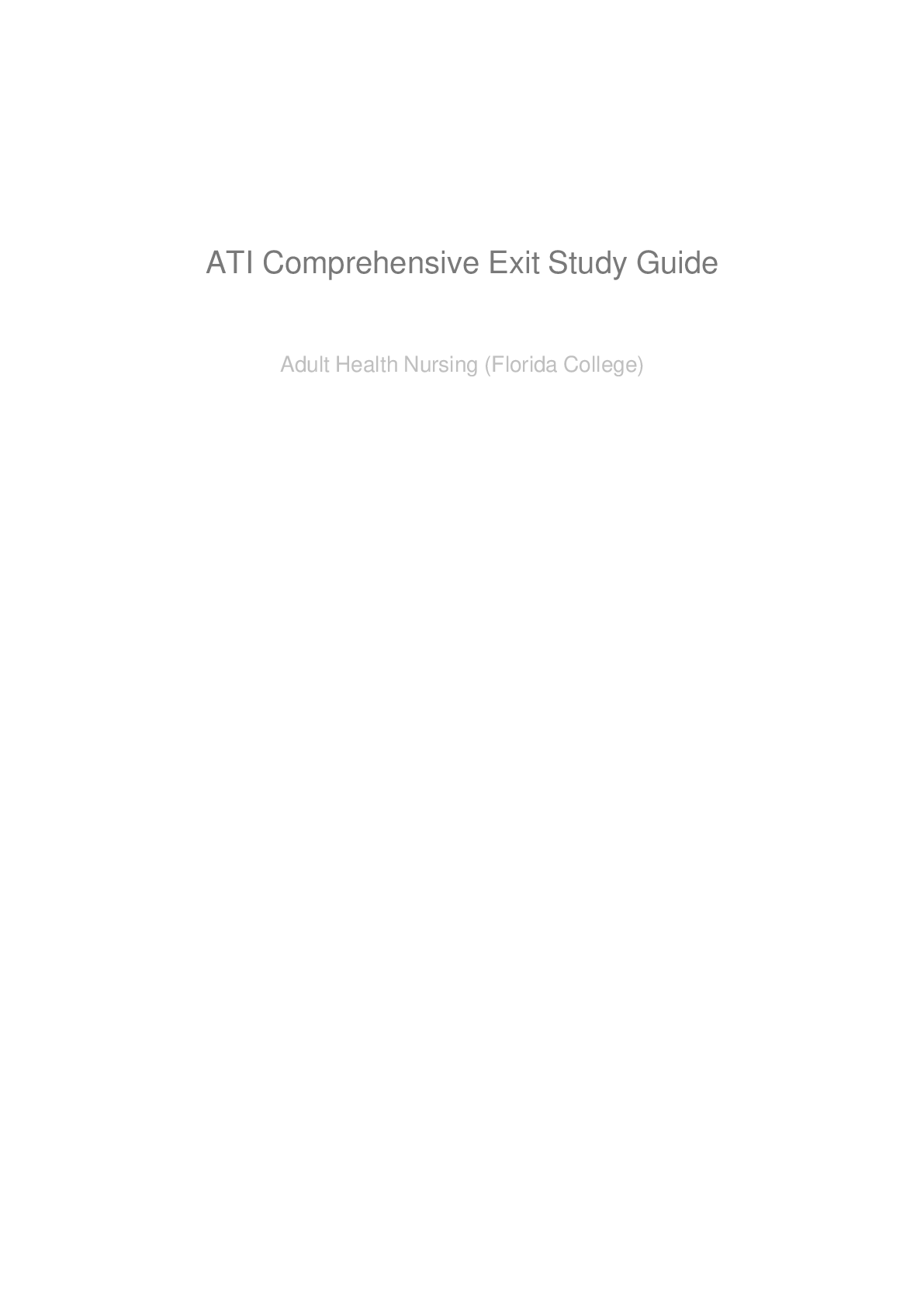*NURSING > ATI > NR228 Nutrition - ATI #1 - Nurse Touch - Wellness & Self-Care - Eating Healthy & Maintaining a Healt (All)
NR228 Nutrition - ATI #1 - Nurse Touch - Wellness & Self-Care - Eating Healthy & Maintaining a Healt
Document Content and Description Below
1. As part of a weight-loss workshop in the local community, a nurse is teaching participants how to use anthropometric measurements for self-assessment. Which of the following measurements from parti... cipants indicates a healthy waist-to-hip ratio? a. Male, 36 in waist, hips 34 inches b. Female, waist 28 inches, hips 31 inches c. Male, waist 38 inches, hips 41 inches 2. Which of the following guidelines does the national weight control registry endorse as a strategy that worked for people it studied who successfully lost weight and maintained it over time? a. Eat plenty of fruits and vegetables. b. Participate in 45 min of moderate physical activity daily. c. Eat four small, low-fat, high-carb meals or snacks per day. d. Gout b. Cancer c. Heart Failure d. Hypothyroidism e. Cardiac dysrhythmias 3. A nurse is counseling a client about maintaining his weight. He is 5 ft 10 in tall and has a sedentary lifestyle. How many calories should the client consume per day? 2,158 calories 4. A nurse is teaching a client who is trying to lose weight about reading food labels. Which of the following instructions should the nurse include? a. The % Daily Value refers to a 1500 calorie diet. b. Serving quantities represent their weight in ounces. c. Amount per serving is the amount in the size portion the label specifies. 5. A nurse is talking with a client who is undergoing treatment for HTN. In explaining the DASH diet, which of the following guidelines should the nurse include? (Select all that apply). a. Two to three servings of fruits per day b. One and a half to two and a half servings of lean meats, fish, or poultry QD c. Four to six servings of vegetables QD d. Five to six servings of low fat or nonfat dairy products QD e. Three to six servings of nuts, seeds, and legumes per week. 6. A nurse is evaluating a client's need to lose weight. Her body mass index is 28.3. Which of the following BMI classifications applies to her? a. Overweight b. Obesity Class I c. Obesity Class II 7. A nurse is teaching a client who has a family history of CV dx about health promotion and disease prevention. Which of the following dietary strategies specifically reduces the risk of CV disease? a. Increasing dietary intake of omega-3 fatty acids b. Increasing dietary intake of trans fatty acids c. Decreasing dietary intake of insoluble fiber Rationale: 8. A client is asking the nurse in his provider's office about using a body wrap while exercising to help accelerate her weight loss. The nurse should explain to the client that this type of device effectively promotes the loss of which of the following? a. Fat b. Water c. Amino acids [Show More]
Last updated: 2 years ago
Preview 1 out of 6 pages

Buy this document to get the full access instantly
Instant Download Access after purchase
Buy NowInstant download
We Accept:

Reviews( 0 )
$13.50
Can't find what you want? Try our AI powered Search
Document information
Connected school, study & course
About the document
Uploaded On
Sep 19, 2021
Number of pages
6
Written in
Additional information
This document has been written for:
Uploaded
Sep 19, 2021
Downloads
0
Views
251














